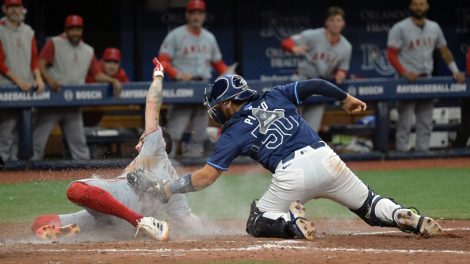Generally speaking, drawing conclusions from a handful of early-season baseball games is exceedingly unwise.
If you took the first four Toronto Blue Jays games as firm indicators of where the team is heading in 2020, you’d wind up believing Vladimir Guerrero Jr. and Bo Bichette are the worst hitters on the club, Hyun-Jin Ryu can’t keep runs off the board, and Anthony Bass is one of the best shutdown relievers in the game. It takes time to figure out where players are at in any given season.
Every hitter in the game can put together a few good at-bats, and even the worst pitcher can stack up some clean innings. After all, Philip Humber pitched a perfect game and Armando Galarraga had one stolen from him. Elite talent is not a prerequisite for success when we’re talking about a couple of contests.
There is one thing you can’t fake, though, not even for a single game: a pitcher’s stuff. If you can throw 100 mph in one outing it’s safe to say you’ve got elite velocity. If your breaking ball shows off-the-charts movement, it’s a noteworthy development.
That’s where we come to Jordan Romano.
[snippet id=4931337]
Entering the season, the Blue Jays talked up the Canadian right-hander consistently, but it was difficult to tell if it was generic optimism or something more meaningful.
Objectively speaking, it didn’t seem prudent to be bullish on the reliever based on a 15.1 inning stint with the Blue Jays last year in which he posted a 7.63 ERA and -0.2 WAR. He wasn’t very effective at the triple-A level either, putting up a 5.79 ERA and 5.01 FIP in 37.2 innings with the Buffalo Bisons.
That was 2019 Romano. The 2020 edition is a different guy. To be clear, that statement is not based on his results thus far. Sure, 2.2 innings of scoreless ball is great, but it’s not particularly meaningful. What matters here is the improved repertoire the Canuck has put on display.
[snippet]
Romano’s arsenal is a simple fastball-slider mix and each pitch has taken a step forward this year in terms of velocity and movement. Last season, his heater clocked in at 94.6 mph on average. That’s plenty respectable, but it’s far from elite these days and ranked 171st among the 646 pitchers who threw at least 10 MLB innings last season. This year he’s at 96.1 mph, which would have ranked 72nd by that same measure in 2019.
The right-hander’s slider has been boosted more significantly, making a 3.1-mph jump from 84.8 to 87.9.
Those numbers by themselves are enough to be intriguing, but the improvement gets more compelling when we look at some of the movement numbers. The general rule of thumb is that the slower a pitch is, the more it can move. Romano is getting more movement on his pitches despite throwing them significantly harder.
Here’s how that looks with his fastball:

Charts like this can be a little opaque, especially when it comes to fastballs, but here’s your summary. Romano’s fastball is dropping significantly less, giving it that “rising” quality that makes it drastically harder to hit up in the zone. The drop on his fastball (or lack thereof) was right about league average last year.
So far in 2020 it’s been 17 per cent better than that, which results in us seeing pitches that look like this:
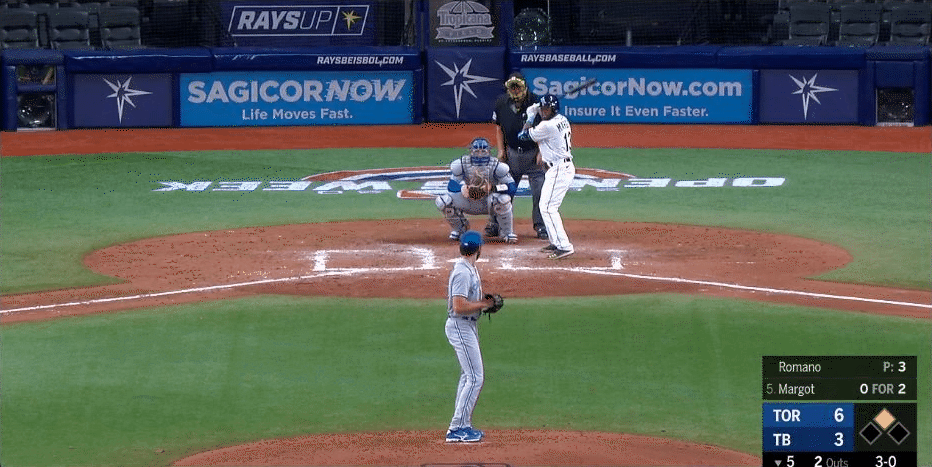
Last year, his four-seamer had a little bit more of a hump to it:
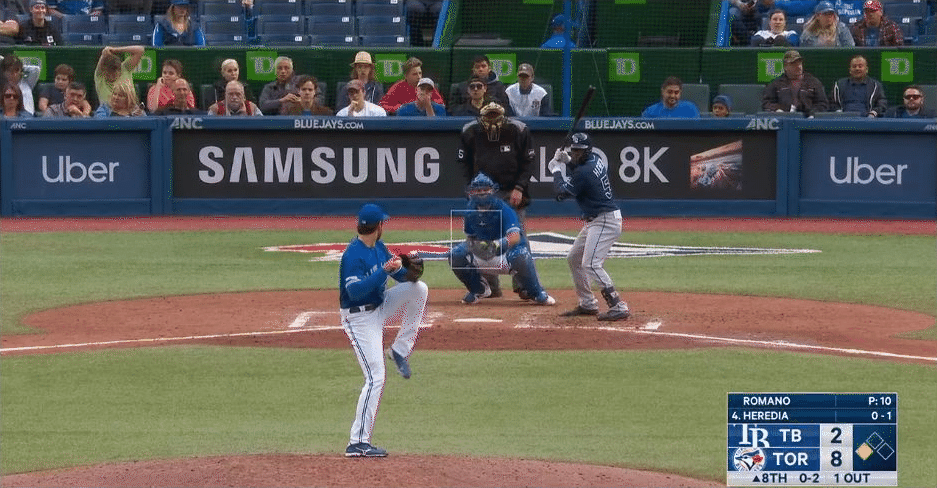
There hasn’t been much change to his horizontal movement, which is fine because four-seamers aren’t generally designed to run. It’s approximately league-average in that regard, but this is a measure more relevant to two-seamers.
As far as his slider is concerned, this is where it’s important to understand what “movement vs. average” really measures. While Romano has put up similar movement numbers to his 2019 season, they mean something very different.
Last year Romano had 4.0 inches of horizontal break on his slider, and this year it sits at a very similar 4.4 inches. However, in the context of the velocity change those numbers mean very different things. Movement vs. average is measured within +/- 2 mph of the pitch in question. So getting four inches of break on a 84.8 mph slider is completely unremarkable, doing it when you’re sitting at 87.9 is well above average.
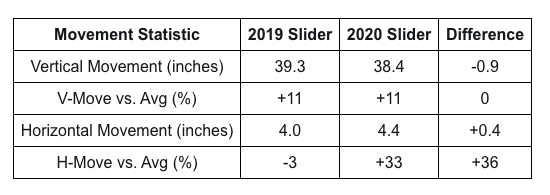
Last season, Romano’s slider had plenty of movement, but because it wasn’t thrown as hard it was a little bit loopy at times:
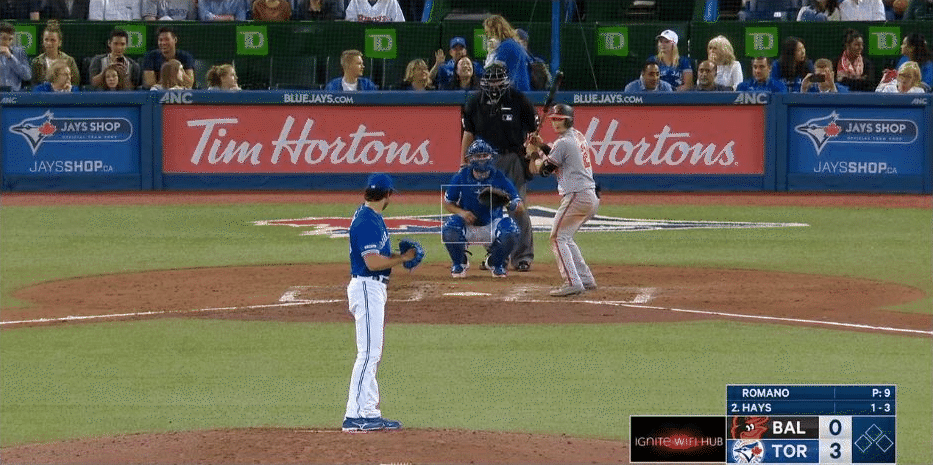
Nowadays, that same movement has a lot more bite. Kevin Kiermaier learned that the hard way in Romano’s first outing of the season on Friday:

None of this is to say that Romano is on the road to a dominant season. His stuff looks exceedingly good, but his ability to command it remains an open question. The Blue Jays are trusting him in high-leverage spots, and for now he’s rewarding that trust.
What we can say for sure is that the 27-year-old is not the pitcher we saw last year. He has much better tools at his disposal than that guy. Now we’ll just have to see what he does with them.
[relatedlinks]








